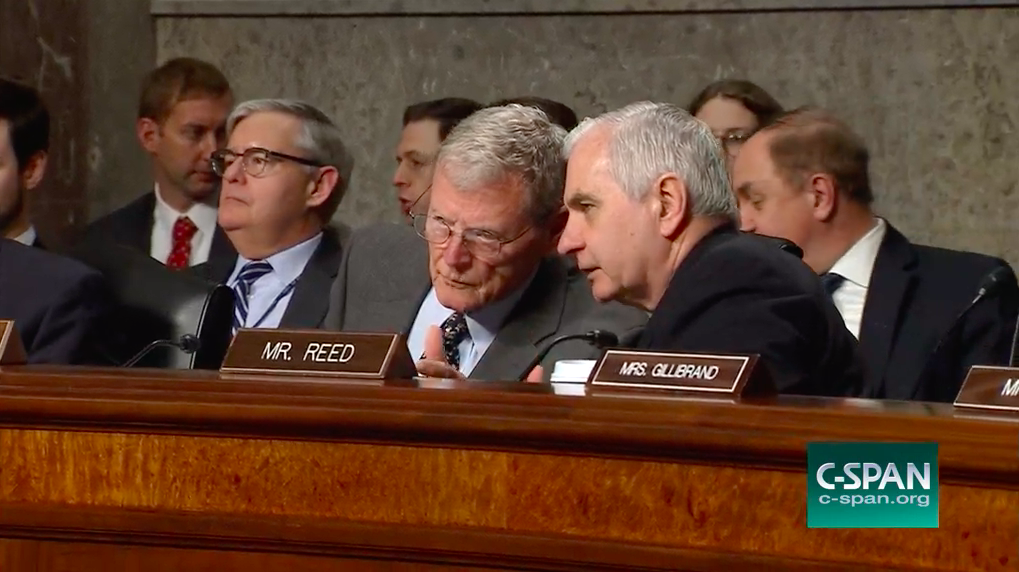The Air Force must fund three-year R&D agreements with companies to help them prepare to meet the requirements of the National Security Space Launch Phase 3 competition.
WASHINGTON — The Senate Armed Services Committee’s markup of the National Defense Authorization Act for Fiscal Year 2021 directs the Air Force to fund up to $250 million in research and development projects to help launch providers prepare to meet future national security launch requirements.
Chairman Sen. Jim Inhofe (R-Okla.) and Ranking Member Sen. Jack Reed (D-R.I.) on June 23 released the full text of the committee’s 1,090-page markup of the 2021 NDAA. The bill, which authorizes $740.5 billion for national defense spending, will be headed to the Senate floor. The committee had released a summary of the bill on June 11.
The bill supports the Air Force’s plan to select two winners this summer in the National Security Space Launch Phase 2 procurement. But the committee disagrees with the Air Force’s decision to terminate R&D funding agreements with companies that don’t win a Phase 2 procurement contract.
The committee says the Air Force, after Phase 2 providers are selected, must fund three-year R&D partnerships with companies to help them prepare to meet the requirements of the National Security Space Launch Phase 3 competition in 2024.
“The Secretary of the Air Force shall establish a program to develop technologies and systems to enhance phase 3 National Security Space Launch requirements and enable further advances in launch capability associated with the insertion of national security payloads into relevant classes of orbits,” says the bill.
The bill sets a ceiling of $250 million for partnerships through 2027. It authorizes $30 million for fiscal year 2021.
The SASC bill also includes language in support of launch providers that fly reusable rockets.
No later than 540 days after selection of National Security Space Launch Phase 2 providers , the Defense Department “must complete the nonrecurring design validation of previously flown launch hardware for National Security Space Launch providers that offer such hardware for use in the phase two acquisition strategy or other national security space missions,” the bill states.
Other space-related provisions in the SASC bill:
Tactically responsive launch — The committee directs the secretary of the Air Force to implement a tactically responsive space launch program, and identify basing requirements to enable tactically responsive space launch, including mobile launch range infrastructure.
Space Development Agency — The SDA by October 1, 2022, or earlier must be transferred from the Office of the Secretary of Defense to the U.S. Space Force. The committee allows the SDA to maintain the same organizational reporting requirements and acquisition authorities as the Space Rapid Capabilities Office.
Space launch rate study — The committee wants a biennial update from the Secretary of the Air Force on the total number of space launches for all national security and federal civil agency entities conducted in the United States during the preceding two-year period; and the number of space launches by the same sponsors projected to occur during the following three-year period.
Impact of National Security Space Launch program on foreign providers — The committee directs the secretary of the Air Force to submit a report on the impact of the acquisition strategy for the National Security Space Launch program on the potential for foreign countries, including the People’s Republic of China, to enter the global commercial space launch market.
Resilient positioning, navigation and timing systems — The committee wants several reports on DoD’s plans to provide resilient and survivable alternative positioning, navigation, and timing systems to complement the Global Positioning System satellites.
